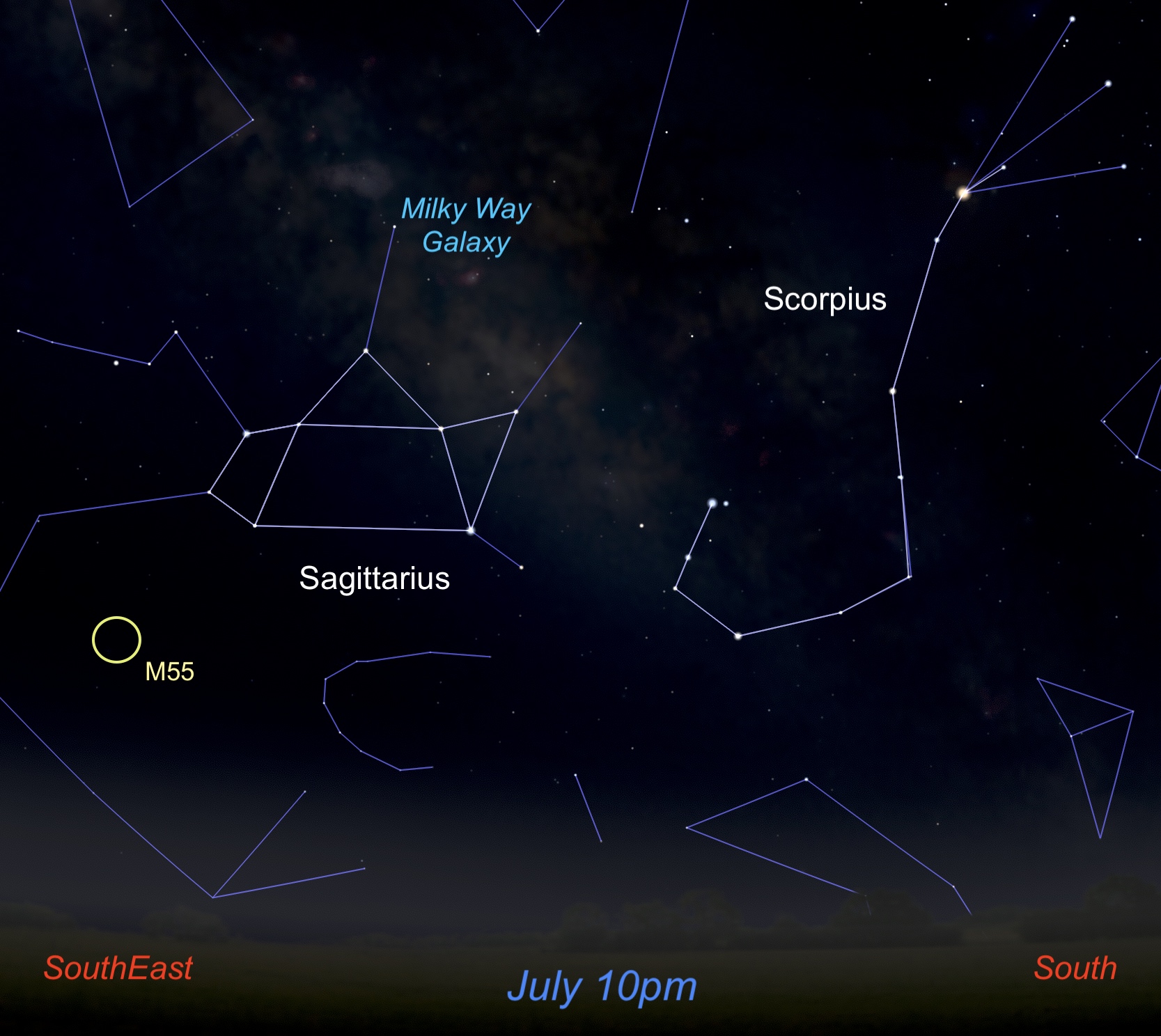
Find A Ball of Stars
July 2023 :
French astronomer Charles Messier cataloged over 100 fuzzy spots in the night sky in the 18th century while searching for comets – smudges that didn’t move past the background stars so couldn’t be comets. Too faint to be clearly seen using telescopes of the era, these objects were later identified as nebulas, distant galaxies, and star clusters as optics improved. Messier traveled the world to make his observations, assembling the descriptions and locations of all the objects he found in his Catalog of Nebulae and Star Clusters. Messier’s work was critical to astronomers who came after him who relied on his catalog to study these little mysteries in the night sky, and not mistake them for comets.
Most easily spotted from the Southern Hemisphere, this “faint fuzzy” was first cataloged by another French astronomer, Nicholas Louis de Lacaille in 1752 from Southern Africa. After searching many years in vain through the atmospheric haze and light pollution of Paris, Charles Messier finally added it to his catalog in July of 1778. Identified as Messier 55 (M55), this large, diffuse object can be hard to distinguish unless it’s well above the horizon and viewed far from city lights.

Look to the south in July and August to see the teapot asterism of Sagittarius. Below the handle you’ll see a faint smudge of M55 through binoculars. More “faint fuzzies” can be found in the steam of the Milky Way, appearing to rise up from the kettle. Image created with assistance from Stellarium: stellarium.org
But July is great month for getting your own glimpse of M55 – especially if you live in the southern half of the US (or south of 39°N latitude). Also known as the “Summer Rose Star,” M55 will reach its highest point in northern hemisphere skies in mid-July. Looking towards the south with a pair of binoculars well after sunset, search for a dim (mag 6.3) cluster of stars below the handle of the “teapot” of the constellation Sagittarius. This loose collection of stars appears about 2/3 as large as the full Moon. A small telescope may resolve the individual stars, but M55 lacks the dense core of stars found in most globular clusters. With binoculars, let your eyes wander the “steam” coming from the teapot-shaped Sagittarius (actually the plane of the Milky Way Galaxy) to find many more nebulas and clusters.
As optics improved, this fuzzy patch was discovered to be a globular cluster of over 100,000 stars that formed more than 12 billion years ago, early in the history of the Universe. Located 20,000 light years from Earth, this ball of ancient stars has a diameter of 100 light years. Recently, NASA released a magnificent image of M55 from the Hubble Space Telescope, revealing just a small portion of the larger cluster. This is an image that Charles Messier could only dream of and would have marveled at! By observing high above the Earth’s atmosphere, Hubble reveals stars inside the cluster impossible to resolve from ground-based telescopes. The spectacular colors in this image correspond to the surface temperatures of the stars; red stars being cooler than the white ones; white stars being cooler than the blue ones. These stars help us learn more about the early Universe. Discover even more: https://www.nasa.gov/feature/goddard/2023/hubble-messier-55
The Hubble Space Telescope has captured magnificent images of most of Messier’s objects. Explore them all: https://www.nasa.gov/content/goddard/hubble-s-messier-catalog/
Original Image and Credits: NASA, ESA, A. Sarajedini (Florida Atlantic University), and M. Libralato (STScI, ESA, JWST); Smaller image: Digital Sky Survey; Image Processing: Gladys Kober



